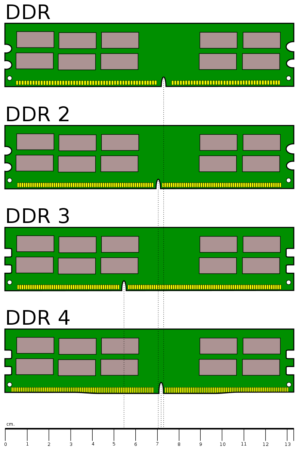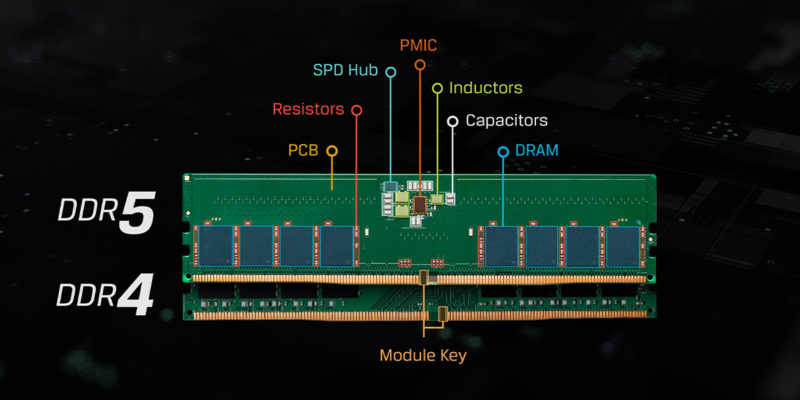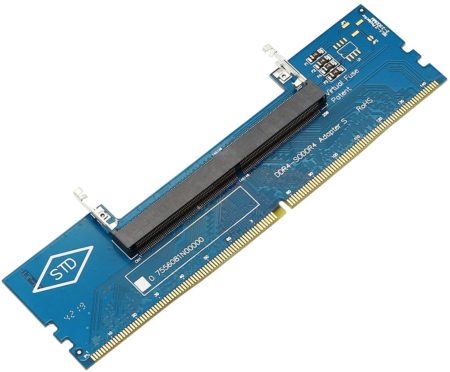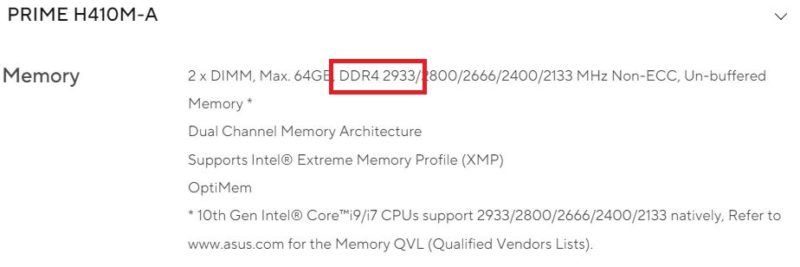The short and simple answer is yes! You CAN reuse old RAM sticks on a different PC if the new computer also supports the same RAM type.
It is normal to save your RAM sticks for later use. Since RAM versions take a long time to update, reusing them on newer builds is a fairly common practice.
All motherboards have specific RAM compatibility requirements. Since motherboards are not backward and forward-compatible with RAM versions, you must make sure about what RAM stick version you have before reusing them.
With the prices for chips and computer components skyrocketing, it is pretty frugal to reuse older components whenever possible.
In the following article, I will discuss whether you can reuse old RAM sticks.
Before delving into whether you can reuse old RAM sticks or not, let us talk about the different RAM types:
TABLE OF CONTENTS
Types of RAM: DDR, DDR2, DDR3, DDR4, DDR5
There are different RAM versions with every newer version, the performance, parameters, and profile change.
Each different RAM type entails:
- A different physical profile – particularly the location of the notch for fitting the RAM sticks into the DIMM slot on the motherboard.
- A different voltage requirement
- A different RAM controller was built into the motherboard’s chipset.
Given the three conditions above, RAM sticks are NOT compatible across generations. You CANNOT reuse DDR3 RAM in a DDR4 motherboard and vice versa.
Also Read: Will DDR5 RAM Work on DDR4 Motherboard?
RAM Sticks Have Different Physical Profiles
You can see the location of the notch/key on different RAM type differs. So, if you plan on reusing a RAM stick, please ensure your motherboard is compatible with its particular version.


Read in Detail: How to Tell if RAM Will Work With Your Motherboard?
So Can You Reuse Old RAM Sticks?
Yes, you can reuse your old RAM sticks IF both the motherboard and the old RAM stick are the same type (version).
In other words:
- A DDR4 RAM Stick CAN ONLY be reused with a motherboard that supports DDR4 RAM
- A DDR5 RAM Stick CAN ONLY be reused with a motherboard that supports DDR5 RAM
So on and so forth.
No adapter can allow you to reuse an older RAM with a motherboard built for a newer RAM generation, i.e., DDR3 RAM sticks on a DDR4 motherboard.
This Applies to Laptops Too
The idea that the RAM stick type has to be compatible with the motherboard isn’t just accurate for desktops. It also applies to laptop RAM sticks too.
A laptop’s SO-DIMM DDR4 RAM can ONLY work with another computer that supports the same DDR4 RAM type.
Can You Reuse Laptops’ RAM ON DESKTOPS?
The laptop and desktop RAM sticks have different profiles.
Laptop RAM sticks are smaller and are thus known as Small Outline Dual in-line Memory Modules (SO-DIMM). At the same time, desktop RAM sticks are called DIMMs.
Therefore, right out of the box, you cannot reuse a laptop’s RAM and stick on to a desktop.
However, with certain adapters, as shown below, you may be able to reuse a laptop’s old RAM on a desktop motherboard.

This adapter takes the SO-DIMM of the same type and increases their size, AND the pin counts to match that of the desktop DIMM slot.
This method, however, could be more flimsy and only sometimes works. Users have reported issues. More on this here: Can You Use Laptop RAM in a Desktop?
Again, the laptop’s RAM type, the RAM slot on the desktop’s motherboard, and the Adapter’s RAM type support must all match.
Can You Reuse HIGHER-FREQUENCY RAM Sticks on LOWER-FREQUENCY-Supported MOTHERBOARDS?
You may have a higher-frequency RAM stick, but your motherboard only supports a lower frequency.
For instance, if you have an old or a spare DDR4 RAM stick with a frequency of 3200 MHz, but if your motherboard only supports a max of 2933 MHz (as shown below), then the RAM WILL Work, albeit it will be capped at 2933 MHz.
In others, it will NOT work to its full potential.

Mixing Two RAM Sticks – Reusing an Old RAM On a Motherboard with a RAM Stick Already Installed
You can reuse an old RAM stick on a motherboard that already has RAM installed but has an extra spare RAM slot.
In this case, if the newly inserted RAM has a higher frequency than the already installed RAM, the newer RAM will clock down its frequency to match the one installed.
Also Read: Intel vs. AMD RAM – Are RAMs for Intel and AMD CPUs Different?
Final Words
The answer to the question “can you reuse old RAM sticks” is a resounding yes, but you must ensure that the motherboard you plug in the old RAM supports the same RAM type.
If you cannot reuse your old RAM sticks, you can always sell them off, gift them to a friend or family, or donate them to a local school.
FREQUENTLY ASKED QUESTIONS
1. Is it safe to reuse old RAM sticks in a new computer build?
It is generally safe to reuse old RAM sticks in a new computer build, as long as the RAM is still functioning properly and is compatible with the new system.
However, keep in mind that older RAM may not be as fast or efficient as newer RAM, so it may be worth investing in newer RAM if you want to optimize your system’s performance.
2. What are the potential risks of reusing old RAM sticks?
The potential risks of reusing old RAM sticks include compatibility issues with the new system, performance issues due to slower or less efficient RAM, and the risk of hardware failure if the RAM is old or has been subjected to wear and tear.
3. How does RAM technology change over time, and what implications does this have for reusing old RAM sticks?
RAM technology is constantly evolving, with newer technologies offering faster speeds and greater efficiency than older technologies.
This means that older RAM sticks may not be able to keep up with the demands of modern software and hardware.
Additionally, as RAM technology advances, newer systems may not be compatible with older RAM sticks, so it’s important to check compatibility before reusing old RAM.
4. What are some common misconceptions about reusing old RAM sticks, and how can I avoid falling prey to these misconceptions?
One common misconception about reusing old RAM sticks is that it’s always cheaper to reuse old RAM than to buy new RAM.
However, this is not always the case, as older RAM may be less efficient or may not be compatible with newer systems.
Another misconception is that all RAM is interchangeable, but this is not true, as RAM sticks may have different speeds, timings, and voltage requirements.
To avoid falling prey to these misconceptions, it’s important to do your research and make an informed decision based on your system’s requirements and your budget.
Also Read: Where is RAM in Device Manager?
